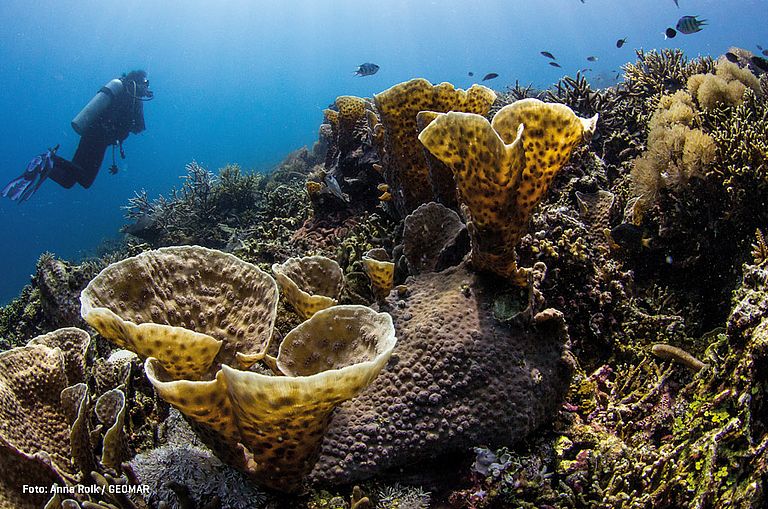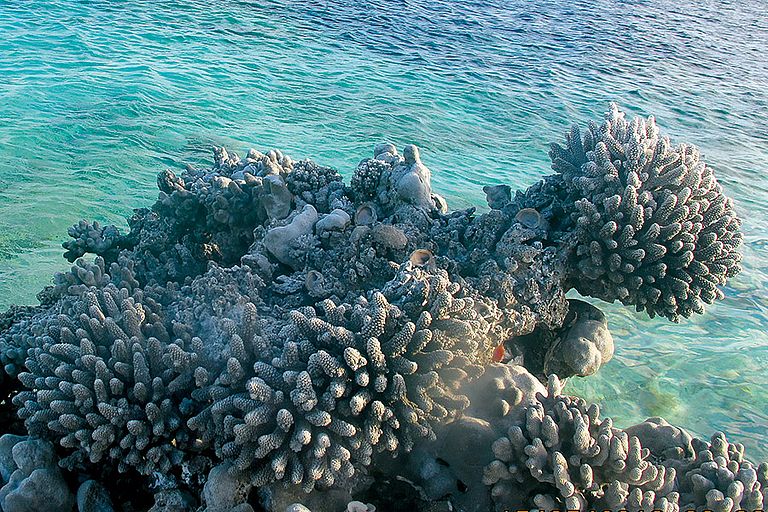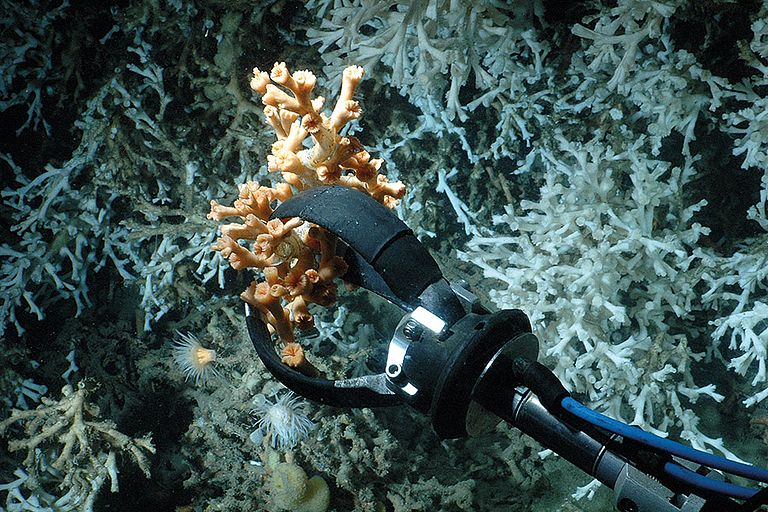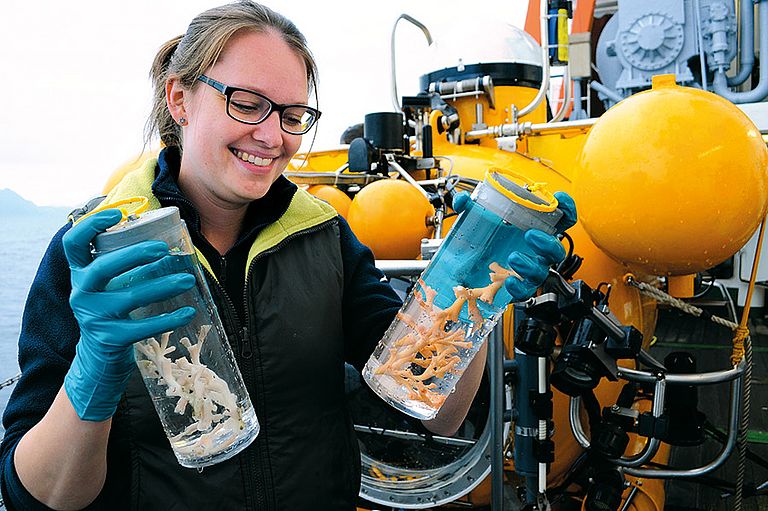Image of month: August 2019
How coral reefs react to changes of the ocean
Coral reefs show how diverse our underwater world can be. In addition to their function as natural coastal defences and their existence as indispensable ecosystems, they store countless pieces of information about the environmental conditions in which they live. But how do these multi-talents react when their environment slowly changes?
Coral reefs can be divided into warm water corals and cold water corals. Warm water corals, like the different types of stony corals shown in the picture, can be found in the shallow and light-flooded parts of tropical waters, whereas cold water corals tend to be found in deeper and darker and, above all, colder regions. The distribution of corals is influenced by different environmental factors. The water temperature is particularly important here. It is assumed that the density fluctuation in the water is decisive for the colonisation of cold water corals. Consequently, changes in water temperature could have a significant impact on the colonisation and distribution of corals.
Warm water corals are particularly affected by rising water temperatures, as they often occur at the upper limit of the temperatures they tolerate. When the ocean water gets too warm for too long symbiotic algae which live within the coral tissue, are expelled and only the coral tissue remains. This process is called coral bleaching. In Thailand in 2010 half of all coral reefs bleached. Dr. Marlene Wall and Dr. Anna Roik from GEOMAR are investigating how tropical corals react to warming events. Studies have shown that corals that are regularly exposed to major temperature fluctuations are more resistant to bleaching than corals whose ambient temperature remains almost constant.
Our oceans retain a significant amount of the carbon dioxide that is released into the atmosphere from human activities. When this extra carbon dioxide is dissolved into the ocean it makes the seawater more acidic. This also increasingly affects the structure and stability of coral reefs.
The reaction of cold water corals to elevated temperature and carbon dioxide conditions was investigated by Dr. Janina Büscher and Dr. Armin Form in a laboratory experiment at GEOMAR. Although they do not suffer from coral bleaching, they also respond to changes in their environment. The results indicate that although cold water corals are better able to cope with changes in water temperature, they are much more sensitive to the increasing acidification of seawater. The lower layers of coral reefs consist of dead coral skeletons, which are not protected by the tissue of living corals and dissolve with acidification. One consequence would be that the reefs could become more unstable. Living corals can only compensate for such changes by increasing energy consumption, which in turn could have negative consequences for reproduction or other processes.
Further information:






